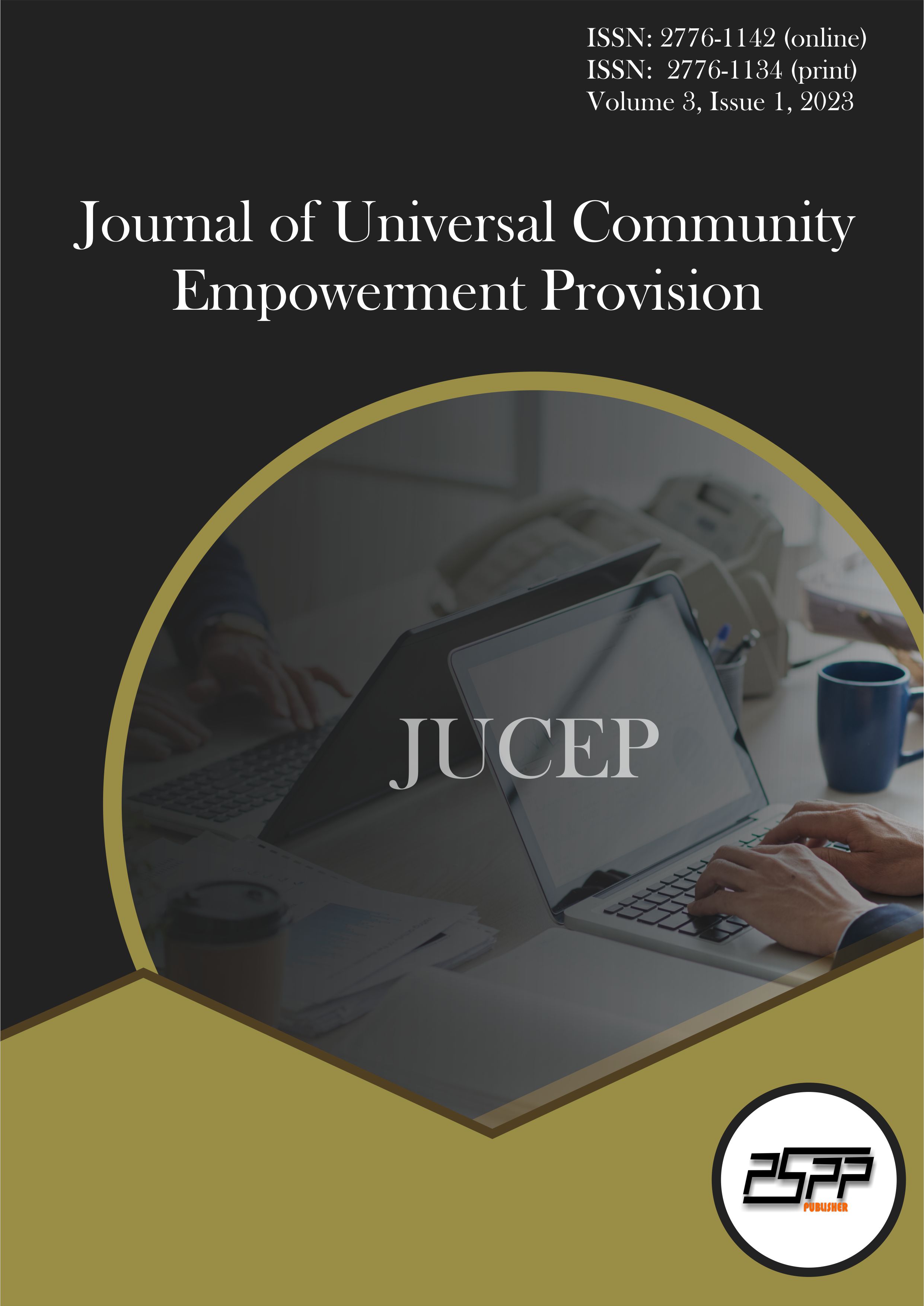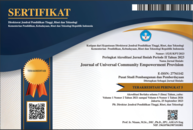Empowerment of Coastal Communities: Hygienic Management of Seaweed
DOI:
https://doi.org/10.55885/jucep.v3i1.250Keywords:
Empowerment, Coastal Communities, Seaweed Hygienic ManagementAbstract
Many coastal communities around the world rely on seaweed for economic, cultural, and environmental reasons. However, poor hygienic practices can compromise the quality and safety of seaweed products, which can have consequences for public health and the environment. Establishing quality control systems, employing clean and safe saltwater, and adopting excellent manufacturing methods are just a few of the initiatives highlighted in this research that can be undertaken to empower coastal communities. Economic potential, environmental safeguards, public health, and cultural preservation are only some of the many advantages of seaweed hygienic management. Finally, it is suggested that stakeholders and policymakers maintain their support for and promotion of seaweed hygienic management to empower coastal communities and guarantee long-term economic growth, environmental protection, public health, and cultural preservation.
References
Ganesan, P., Kumar, C. G., & Bhaskar, N. (2017). Recent developments in microbial production and biotechnological significance of γ-Polyglutamic acid. Microbial Cell Factories, 16(1), 1-15. https://doi.org/10.1186/s12934-017-0648-0
Hwang, E.K., Kim, M.G., Lee, J.Y., & Kim, H. (2019). Effect of sanitizing agents on the quality of dried seaweed (Saccharina japonica). Food Science and Biotechnology, 28(4), 1057-1065. https://doi.org/10.1007/s10068-019-00560-5
Liu, F., Pang, S.J., Zou, D.H., & Zou, J. (2019). Environmental benefits and risks of seaweed cultivation: A review. Journal of Oceanology and Limnology, 37(4), 1190-1201. https://doi.org/10.1007/s00343-019-8252-6
Liu, F., Pang, S.J., Zou, D.H., & Zou, J. (2019). Environmental benefits and risks of seaweed cultivation: A review. Journal of Oceanology and Limnology, 37(4), 1190-1201. https://doi.org/10.1007/s00343-019-8252-6
Sudirman, A., Suharto, S., Rizal, S., & Sulistiani, A. (2020). Implementation of seaweed quality control in Indonesia. Aquatic Procedia, 23, 65-69. https://doi.org/10.1016/j.aqpro.2020.11.012
Wang, J., Xie, S., Liu, X., Zhang, X., & Wu, J. (2021). Quality control of edible seaweed. Journal of Food Quality, 2021, Article ID 6675479. https://doi.org/10.1155/2021/6675479
Ye, T., Wu, S., & Yuan, Q. (2019). Hygienic production of dried laver (Porphyra spp.) in China: A review. Journal of Aquatic Food Product Technology, 28(2), 123-134. https://doi.org/10.1080/10498850.2019.1573744
Yu, H., Zhao, Y., Zhang, M., & Wu, Y. (2021). The marketing potential of seaweed products: An empirical study of consumer preferences. Journal of Cleaner Production, 294, 126287. https://doi.org/10.1016/j.jclepro.2021.126287
Yu, H., Zhao, Y., Zhang, M., & Wu, Y. (2021). The marketing potential of seaweed products: An empirical study of consumer preferences. Journal of Cleaner Production, 294, 126287. https://doi.org/10.1016/j.jclepro.2021.126287
Downloads
Published
How to Cite
Issue
Section
License
Copyright (c) 2023 Journal of Universal Community Empowerment Provision

This work is licensed under a Creative Commons Attribution-ShareAlike 4.0 International License.
















